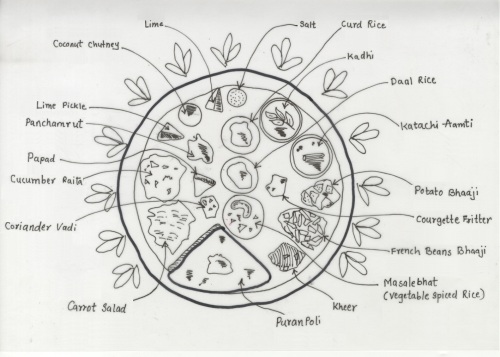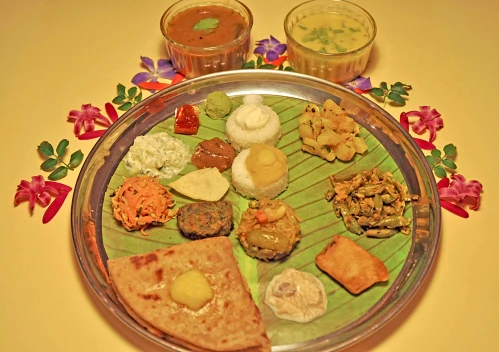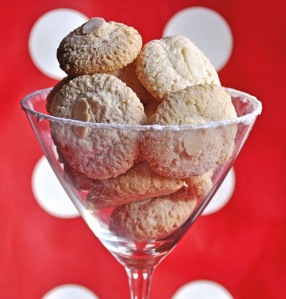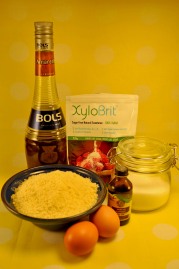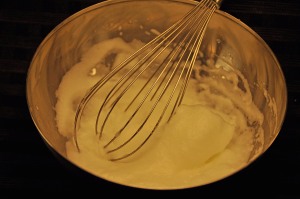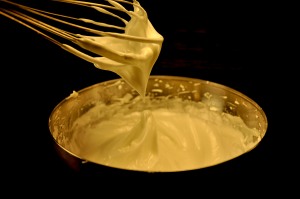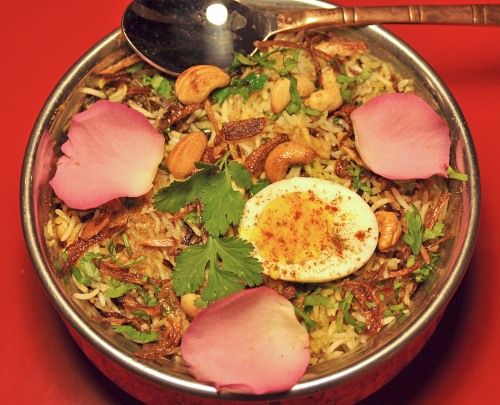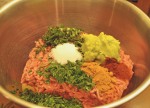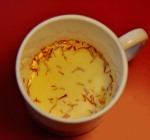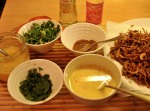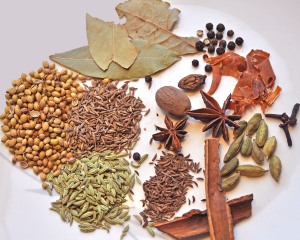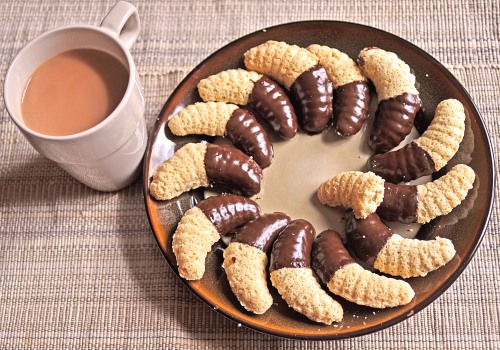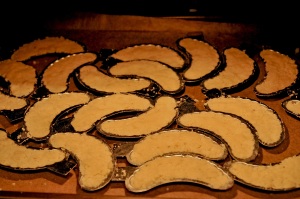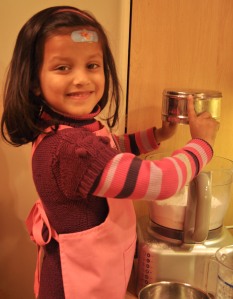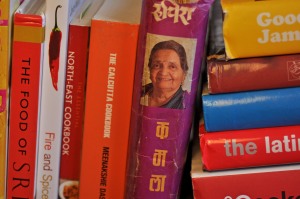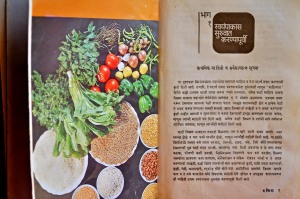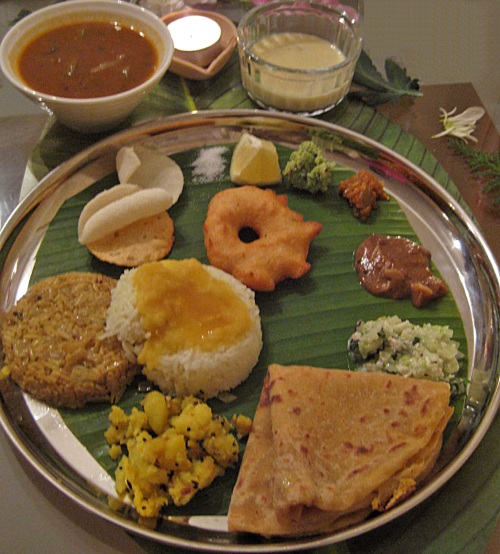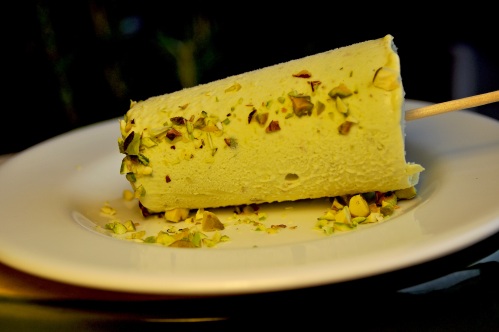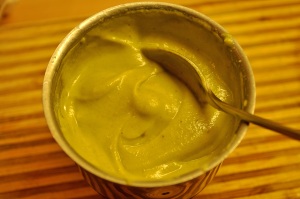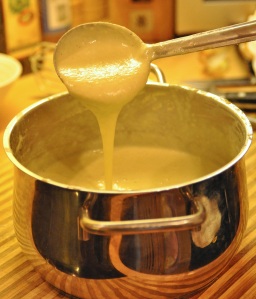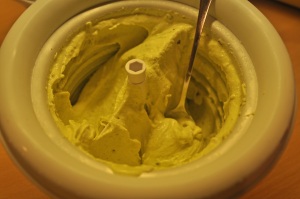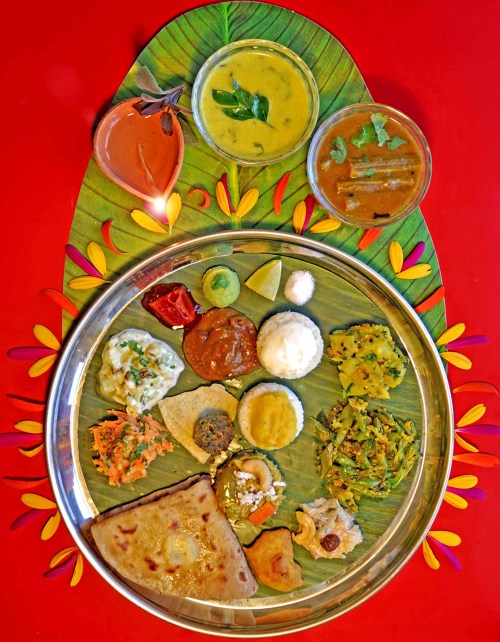 Perfection is a myth according to many and many more like me believe that it’s a dream, something that you can’t really touch but there’s an image set in your mind that you strive to achieve. I have an image set in my mind about what a perfect Maharashtrian Thali on festive occasions should be like. Perfect little piles of different dry vegetables, Raitas, salads, rice varieties, pickles, chutneys and the centre of it all, the sweet lentil stuffed bread, Puranpoli! When I was younger, the all important Puranpoli was the main item of interest and everything else seemed like a distraction. I used to even complain to my mother for her obsession of cooking too many side dishes in order to make it look all perfect. Now when I do the exact same thing and fuss over fifteen different elements on the plate, I smile to myself! Yes, no matter how much I deny it, slowly but surely, I’m turning into my mother. I’m also keeping the tradition alive that came from my mother, my grandmother and all those previous generations of women in my family who were obsessed with this idea of how things should be.
Perfection is a myth according to many and many more like me believe that it’s a dream, something that you can’t really touch but there’s an image set in your mind that you strive to achieve. I have an image set in my mind about what a perfect Maharashtrian Thali on festive occasions should be like. Perfect little piles of different dry vegetables, Raitas, salads, rice varieties, pickles, chutneys and the centre of it all, the sweet lentil stuffed bread, Puranpoli! When I was younger, the all important Puranpoli was the main item of interest and everything else seemed like a distraction. I used to even complain to my mother for her obsession of cooking too many side dishes in order to make it look all perfect. Now when I do the exact same thing and fuss over fifteen different elements on the plate, I smile to myself! Yes, no matter how much I deny it, slowly but surely, I’m turning into my mother. I’m also keeping the tradition alive that came from my mother, my grandmother and all those previous generations of women in my family who were obsessed with this idea of how things should be.
This time around for Holi celebrations, I decided not to fight off my instinct and instead decided to embrace my obsession. Fortunately I had time and energy to tackle so many different recipes and the all important order of how to plate them perfectly.
This is a rough sketch of the plate that I had prepared before plating the food so that I don’t miss the order & I don’t forget to plate something. This is the manner in which Maharashtrians would prepare the plate but I’m told that in Karnataka, the order is exactly reverse, instead of anticlockwise direction of lime, chutney, pickle, salads etc. they go clockwise.
Cooking took six long hours in total but it was at a nice leisurely pace and I thoroughly enjoyed the process. I was even conversing (in my mind) with my mom & other women in my family while cooking. I can hear them when I cook, “This is not how we do this”, “This needs to be little more runny”, “Don’t put asafetida in that”, “Don’t put too much on the plate”…Constant reminders, corrections, advise & encouragement, all at the same time. After I plated everything and looked at the picture with satisfaction, I so strongly felt that they should have been here to taste it and to enjoy the feast. I remember being someone’s daughter, someone’s granddaughter, someone’s niece, someone’s daughter-in-law and someone’s grand-daughter-in-law. I remember being pampered by all those women, I remember tasting their fantastic food, I remember picking up all these skills from them and most of all I remember them enjoying the process. At times like these, I realise, how at the very core I’m so much like all of them, even though my modern life is so different from theirs, how I’m still a simple woman trying to preserve my culinary heritage!
A little description of the dishes:
Puranpoli: This is a bread stuffed with sweet filling made with yellow lentils (chana dal). An absolute delicacy of Maharashtra & it is a must for quite a few festive meals.
Coconut chutney: Fresh coconut, chilies, coriander, raw mango (for sourness or one use lime juice), salt & sugar ground together.
Pickle: I used homemade lime pickle, a special recipe called ‘Upvasache lonche’ which has only four ingredients limes, salt, sugar and chili powder all mixed together & kept in sterilized jars until the lime are soft & have absorbed all the flavours. It took about two months for my pickle to be completely ready and although it can last for a long time, mine will be consumed very quickly as its really delicious.
Cucumber Raita (Koshimbir): It’s finely chopped cucumber & coriander leaves mixed with some plain yogurt, salt, sugar & a little peanut powder. Use of peanut powder is very typical to Maharashtrian recipes and it gives the salads a nice nutty flavour. A tempering of cumin seeds, chopped green chilies and curry leaves fried in little ghee was poured on top of the raita to give it more flavour.
Carrot Salad (Koshimbir): Same as cucumber raita except there is no yogurt in this salad instead a little lime juice is added for sourness.
Potato Bhaji: Boiled and cubed potatoes are sautéed in spicy tempering using curry leaves, chilies & urad dal. Fresh grated coconut and coriander leaves are sprinkled on top.
French Beans Bhaji: Sliced French beans are sautéed in tempering and then covered and steamed in its on juices until tender but not overcooked. Peanut powder, salt, sugar, lime juice, grated coconut and coriander leaves are added for flavour.
Courgette Fritter: This is similar to a Pakora made with gram flour batter. A local vegetable called Ghosale is used for this bhaji. Ghosale is very similar to courgette (Zucchini) & I used courgette myself. Any other vegetables like potato or cauliflower etc. can be used for a fritter.
Kothimbir Vadi: This spicy coriander cutlet is a typical Maharashtrian dish. Yellow lentils (chana dal) are soaked until soft, drained completely and them ground with chilies, ginger, salt, sugar and lime juice. A bunch of coriander is finely chopped and mixed with the ground paste and a the mixture is formed into a rolled, steamed, when cold cut into thick circles and then shallow fried in some oil. Gram flour is sometimes used instead of soaked chana dal to make the paste.
Kadhi: This is a spiced yogurt soup (very broad and crude description indeed!) that is made in many different ways, all overIndia. My version used curry leaves, ginger, green chilies, asafetida, cinnamon and cloves for flavouring.
Katachi Aamti : When the yellow dal is being cooked for the Puranpoli, the excess water in which the dal is cooked is collected and used to make ‘Aamti’ which is a clever use of a protein-rich byproduct & is absolutely delicious. I also added some drumsticks in mine.
Kheer: This sweet is also called ‘Payasam’ inSouth India. This is similar to rice pudding but can be made with thin wheat noodles called Seveyein instead of rice. I made Seveyein kheer with cashew nuts and raisin.
Masalebhat: This is essentially a variation of Vegetable Pulao prepared using Maharashtrian spice mix powder called ‘Goda Masala’. A range of vegetables can be used but I used Tendli / Tindora, carrots & green peas.
Panchamrut: This is a tangy tamarind chutney which uses dried coconut flakes, sesame seed powder, peanut powder, chilies and jaggery (or sugar) Yummy!!
Typically a festive meal like this is offered to the Gods and due to religious reasons, use of pungent garlic & onion is forbidden. While for me there’s no such restriction, I still try to avoid the two ingredients that ‘I Love’ just to learn that an equally delicious and flavourful meal can be prepared without them.
Sweet, sour, hot, crispy, soft, tangy, cool, warm…oh.. the vocabulary in English language is really limited to describe all the tastes and textures presented on a single plate of vegetarian meal like this. A rich, grand traditional meal of my land!
